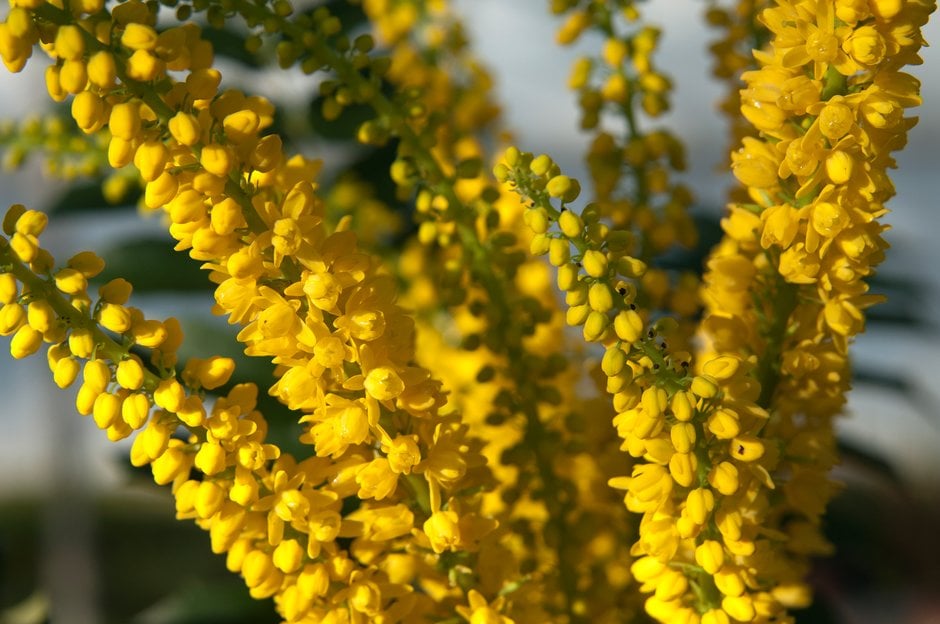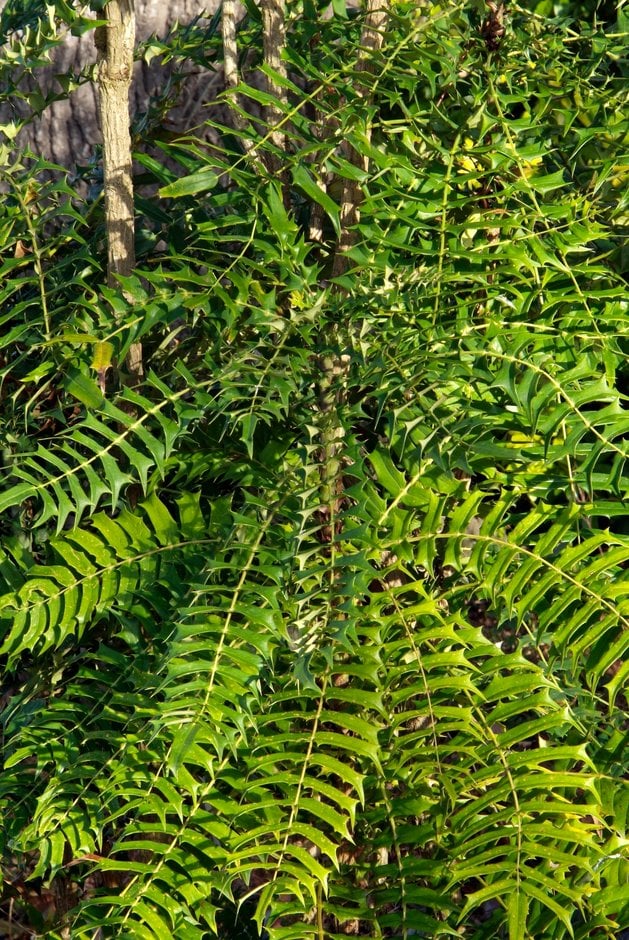Mahonia oiwakensis subsp. lomariifolia

lomaria-leaved mahonia
An erect large evergreen shrub to 3-4m, with long, pinnate leaves with spiny leaflets. Flowers bright yellow, slightly scented, in dense, erect, clustered racemes to 25cm in length from late autumn into winter, followed by blue-black berries
Size
Ultimate height
2.5–4 metresTime to ultimate height
10–20 yearsUltimate spread
1.5–2.5 metresGrowing conditions
Moisture
Moist but well–drained, Well–drainedpH
Acid, Alkaline, NeutralColour & scent
| Stem | Flower | Foliage | Fruit | |
| Spring | Green | |||
|---|---|---|---|---|
| Summer | Green | |||
| Autumn | Green | |||
| Winter | Yellow | Green | Black Blue |
Position
- Full shade
- Partial shade
Aspect
South–facing or North–facing or West–facing or East–facing
Exposure
Sheltered Hardiness
H4Botanical details
- Family
- Berberidaceae
- Native to GB / Ireland
- No
- Foliage
- Evergreen
- Habit
- Bushy
- Potentially harmful
- Berries are ornamental, not to be eaten. Wear gloves and other protective equipment when handling
- Genus
Mahonia are evergreen shrubs with leathery, pinnate leaves which are often spine-toothed, and clustered racemes of sometimes fragrant yellow flowers, sometimes followed by black or purple berries
- Name status
Correct
- Plant range
- SW China, Myanmar
How to grow
Cultivation
Grows well in moderately fertile, humus-rich soil. Will tolerate full sun if the soil is not too dry. Provide shelter from cold, drying winds. See mahonia cultivation
Propagation
Propagate by seed sown in containers in autumn or as soon as ripe. Stratified seeds germinate freely. Root semi-ripe cuttings in late summer or autumn
Suggested planting locations and garden types
- Cottage and informal garden
- Wildlife gardens
- Low Maintenance
- Flower borders and beds
Pruning
Pests
Generally pest-free
Diseases
Generally disease-free
Love gardening
Sign up to receive regular gardening tips, inspiration, offers and more
View our Privacy Policy
Get involved
The Royal Horticultural Society is the UK’s leading gardening charity. We aim to enrich everyone’s life through plants, and make the UK a greener and more beautiful place.

